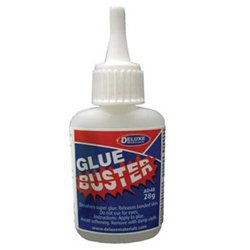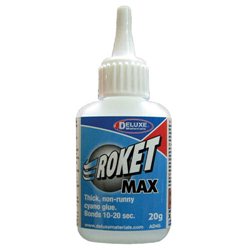Adding sufficient nose weight to a model aircraft can be a delicate task, too little can result in a tail sitter,...
No products
Product successfully added to your shopping cart
There are 0 items in your cart. There is 1 item in your cart.
Search Tips
Christmas and New Year
Due to public holidays, orders will be next dispatched on Monday 29th.
If you select next day delivery at checkout, please note deliveries are not made on New Year's Day or Sundays.
The shop in Sandown is closed on Saturday 27th December and will reopen on Tuesday 30th December.
Tuesday 30th: 10am to 4.30pm - Wednesday 31st: 10am to 2.30pm - Thursday 1st: closed - Friday onwards: 10am to 4.30pm.
How do I clean super glue (cyanoacrylate)?
Fortunately these days there are special products to help you remove any little super glue mistakes such as Deluxe Materials specially formulated Glue Buster, but historically super glue removal had been a bit of a sticky situation.
The problem with removing super glue was that any chemical or abrasive substance strong enough to remove the glue, often resulted in damage being caused to the surface that it was stuck to. Past techniques used to remove super glue included laying a damp cloth over the affected area or soaking the glue in vegetable oil or diluted vinegar and letting it sit for a few hours to moisten the glue. Other suggestions included blotting the glue with acetone or rubbing alcohol to gently break the glue down followed by rinsing with a damp cloth.
Whether you adopt an old or new method, the most important advice is to do a tester spot on your model first to check that it will not cause damage.
Click here to receive the tips weekly in your mailbox. You can unsubscribe at any time.










